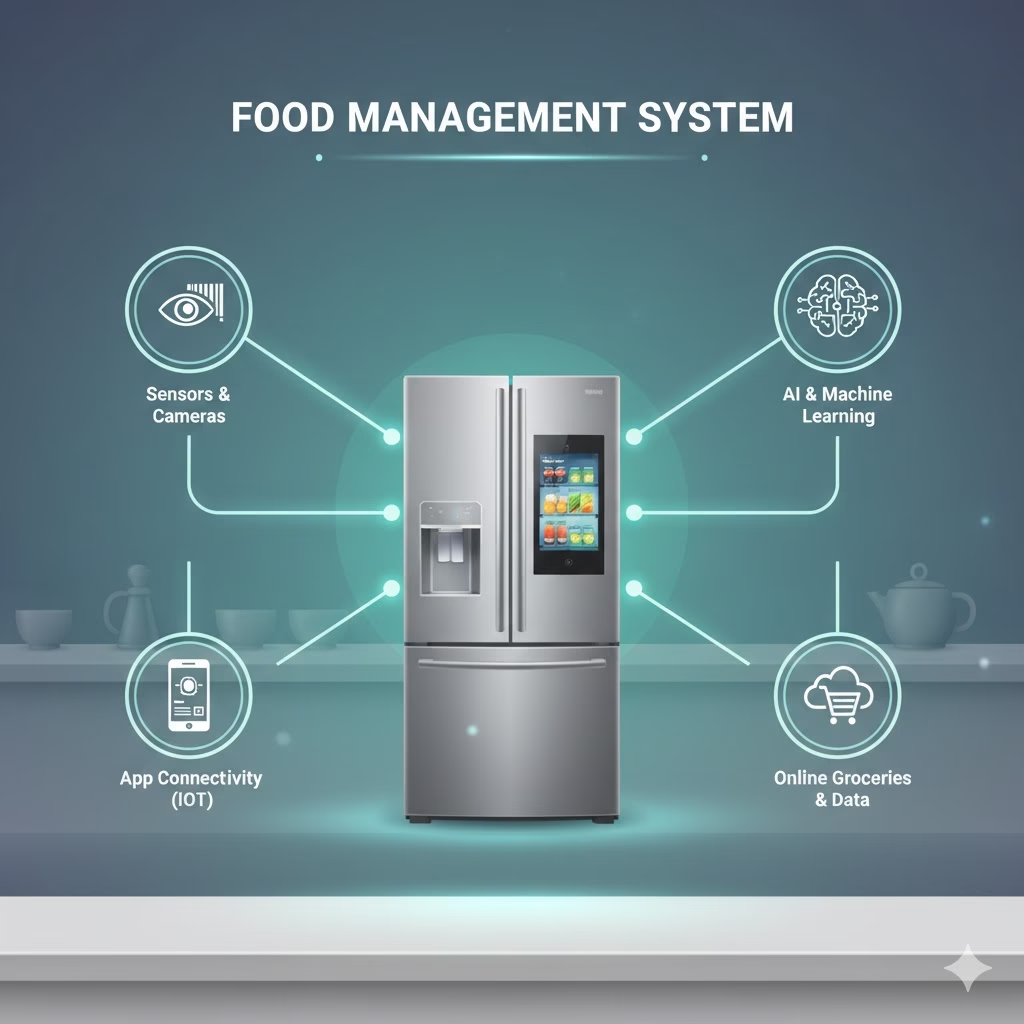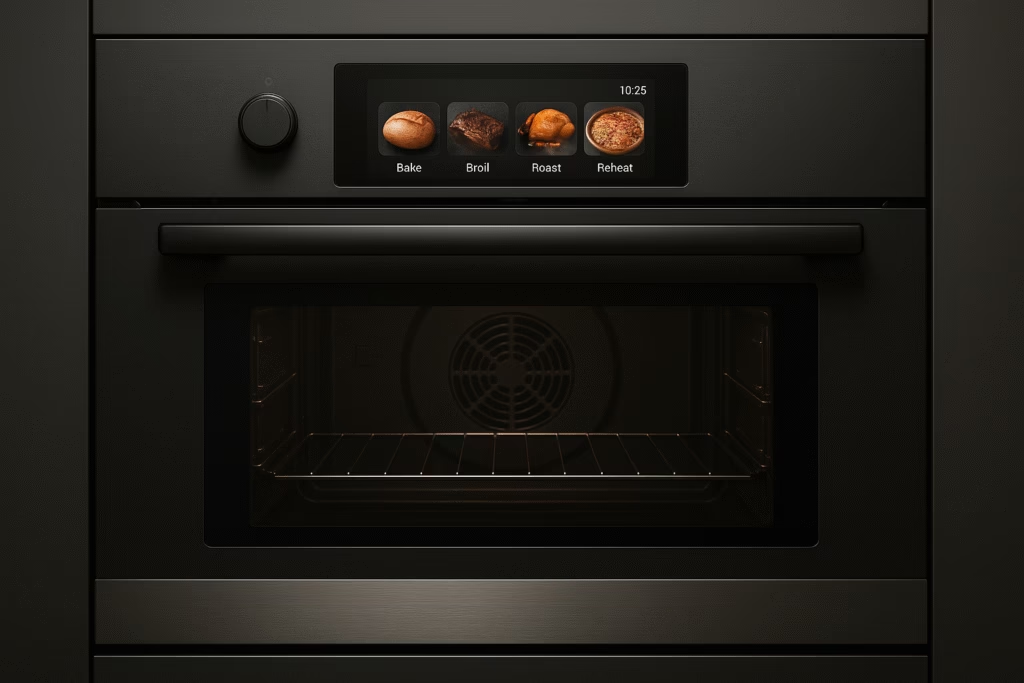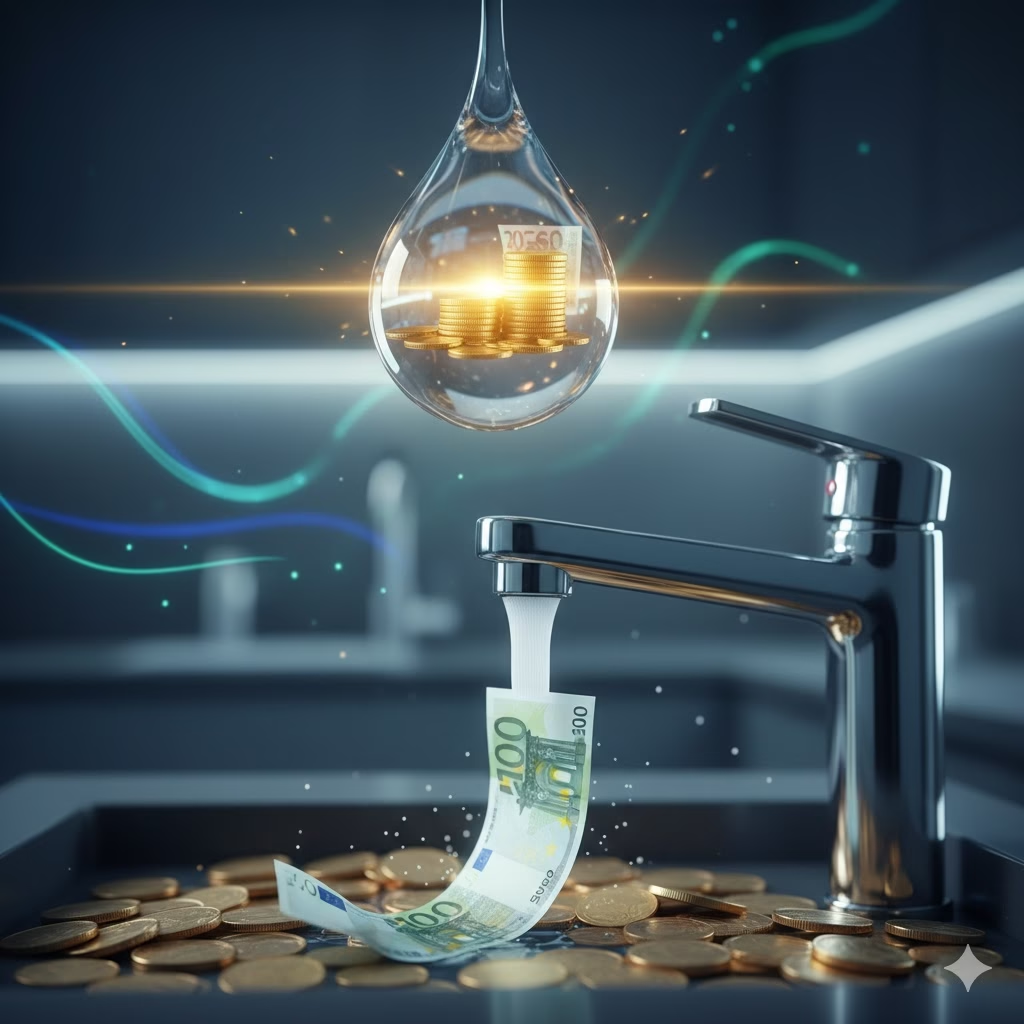
We all feel the sting of high bills, and seeing water wasted can be frustrating. What if you could easily cut down on water use and bills without giving up comfort? This article shows you simple, smart upgrades for your home. They prove that to Save Water is to save a lot of money, all while helping the planet.
The world’s clean water is a limited resource, and the cost of water—plus the energy needed to heat it—keeps going up. Today, being eco-friendly does not mean you have to take miserable, cold showers or stop using your dishwasher. Instead, it means using smart, efficient tools that cut down on water use while keeping your quality of life high.
Your kitchen and bathroom use most of your home’s water. This makes them the best places to start saving!
This guide gives you the best eco-friendly tools and changes you can make today. These simple fixes will help you Save Water and lead to big savings on your utility bills over time.
Zone 1: The Busy Kitchen
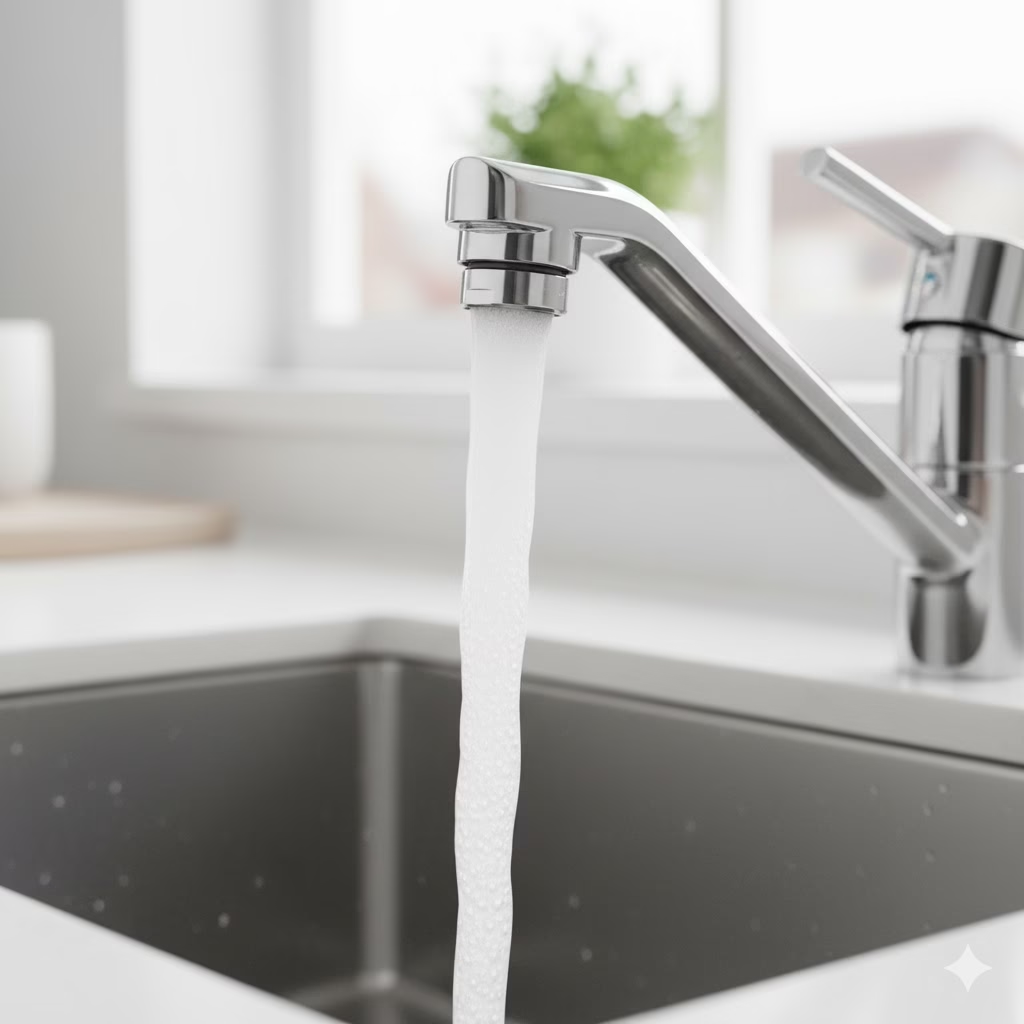
The kitchen faucet is a major source of wasted water. Washing dishes, rinsing food, and filling up pots can use a ton of water if your tap is not efficient.
1. Tap Aerators: The Tiny Tool That Saves Big
A tap aerator is one of the easiest and cheapest gadgets to install, yet it brings some of the fastest results for saving water.
What This Gadget Is
An aerator is a small metal or plastic screen you screw onto the end of almost any kitchen or bathroom faucet. It works by mixing air into the flowing water.
How It Works to Save Water
By adding air, the aerator makes the water stream feel bigger while using much less water. A normal kitchen faucet can pour out over 2.2 gallons every minute (GPM). A water-saving aerator can reduce this to between 1.5 GPM and 1.8 GPM. This cuts your water use by up to 30%! You will not even notice a loss in water power. The water stream feels strong and soft, and it helps stop splashing.
How to Do It (Installation is Easy):
- Check Your Tap: Taps have either threads on the inside (male) or the outside (female). You need the opposite type of aerator.
- Unscrew the Old One: Turn the old aerator counter-clockwise to remove it. You might need a wrench if it is stuck.
- Clean Up: Wipe away any mineral buildup or dirt from the tap’s threads.
- Put the New One On: Screw the new, low-flow aerator onto the faucet by hand until it is tight. Give it a small turn with a wrench to make sure it is snug.
2. Touchless or Sensor Faucets
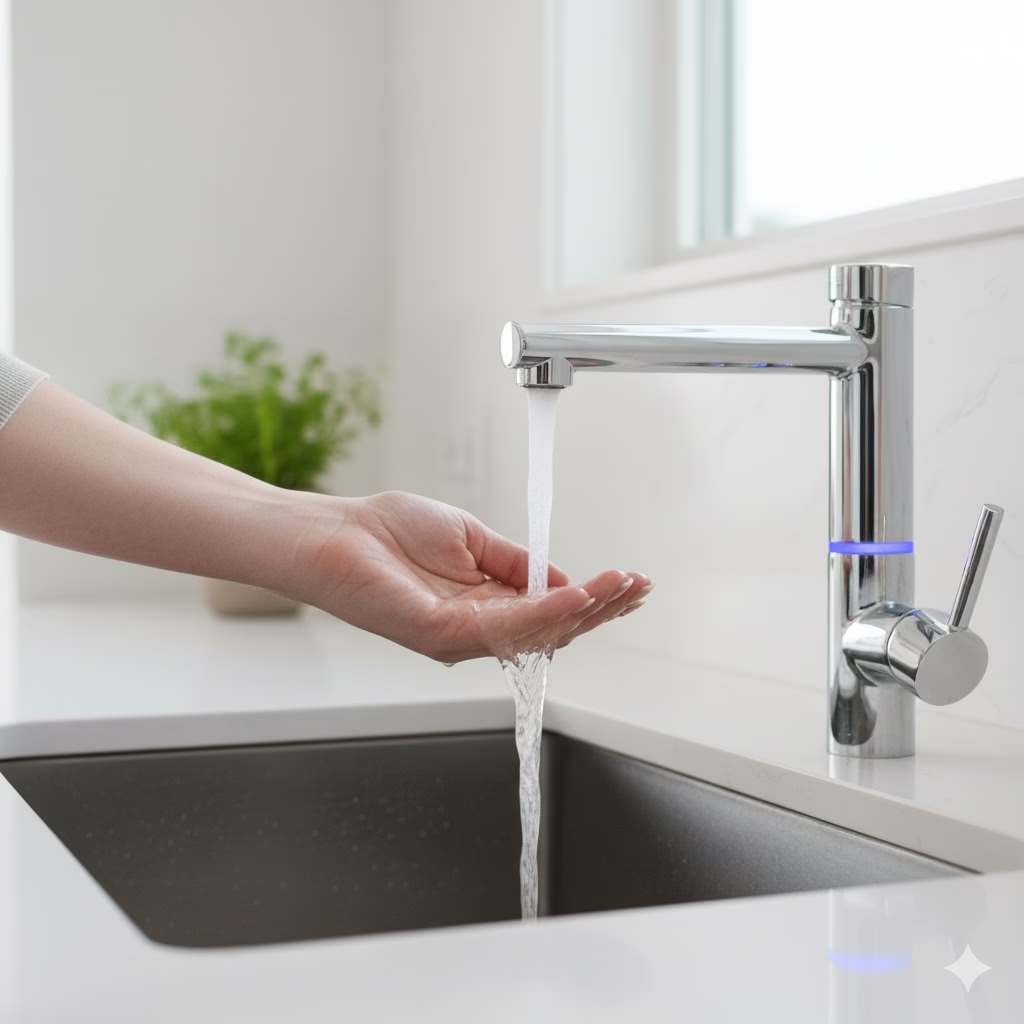
These cost more at first, but a sensor faucet completely changes how you use water. It stops waste caused by people forgetting to turn the tap off.
What This Gadget Is
A faucet that has a sensor. It turns the water on and off automatically when you put your hands near it.
How It Works to Save Water
In the kitchen, people often leave the water running while they look for a scrubbing brush, scrape food off a plate, or look for an ingredient. A sensor faucet instantly shuts off the flow as soon as your hands move away. Over a whole year, all these short stops in flow save a lot of water, especially in a busy home. Most models also let you set the temperature quickly, so you do not waste water while waiting for it to get warm.
How to Do It (A Bit More Complex to Install):
Putting in a sensor faucet is more involved than just adding an aerator. You need to get under the sink to connect the valve and the power source (it uses batteries or plugs into the wall). If you are not familiar with plumbing, it is best to hire a professional to install it.
- Take Out the Old Faucet: Turn off the main water supply. Then, disconnect the hot and cold water lines.
- Mount the New Faucet: Secure the new sensor faucet in its spot.
- Hook Up the Power: Connect the valve (the part that controls the flow) to the water lines and plug in the sensor or battery box.
- Test It: Turn the water back on and check that the sensor works and that the water temperature is right.
Zone 2: The Bathroom Water Saver

The toilet and shower use the most water in a normal home. Upgrading these fixtures gives you the quickest savings.
3. Low-Flow or High-Efficiency Showerheads (HES)
New HES technology proves you do not need a huge amount of water to feel clean; you just need a spray with good pressure.
What This Gadget Is
These are showerheads made to use 2.0 GPM or less. Older showerheads can easily use 2.5 GPM or more.
How It Works to Save Water
HES devices use smart designs, like tiny holes or technology that mixes air into the water. This creates a strong, pleasant spray while using less water. A huge bonus: since you use less hot water, you also cut your energy bills (for gas or electricity) because you do not have to heat as much water. This gives you a double saving.
How to Do It (Installation is Simple):
- Remove the Old Head: Use a wrench to unscrew the old showerhead by turning it to the left.
- Clean and Prep: Clean off any mineral buildup or old tape from the shower arm threads.
- Wrap New Tape: Wrap new plumber’s tape (white, thin tape) around the threads of the shower arm, turning it to the right.
- Install the New Head: Screw the new low-flow showerhead on by hand until it is tight.
4. Shower Timers and Water Monitors
For homes where people love long showers, these simple gadgets gently remind them to save water.
What This Gadget Is
They are small, waterproof timers or devices (like the Waterpebble) that use different coloured lights to track how long you are in the shower.
How It Works to Save Water
These devices take the guesswork out of conserving water. They are usually set to a maximum of four or five minutes. When the light turns red, the person knows their time is up. A single four-minute shower can save many gallons compared to a ten-minute one.
How to Do It (Usage):
Just place the timer where you can see it in the shower. Press the start button when you turn the water on. Over time, the lights will teach everyone in your home to be more aware of how much time they are spending under the water.
5. Dual-Flush Conversion Kits and Displacement Devices
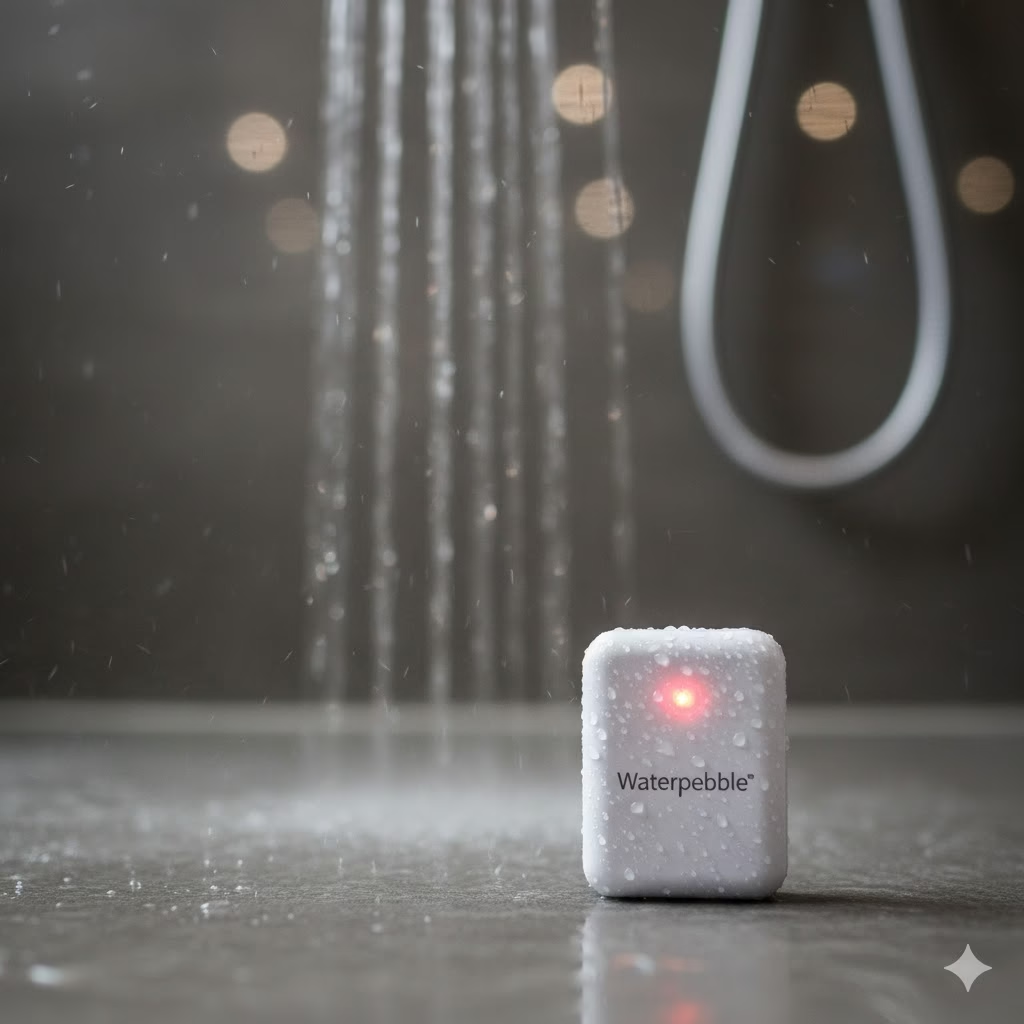
The toilet uses the most water inside a home. Fixing this area is key to any Save Water plan.
What These Gadgets Are
- Dual-Flush Toilets (New): Toilets with two buttons: a full flush (about 1.6 gallons) for solid waste and a half flush (about 0.8 gallons) for liquid waste.
- Conversion Kits (For Your Old Toilet): These change your normal flush handle into a dual-mode button. They let you stop the flush early or choose between a full or half flush on the toilet you already own.
- Displacement Devices (For Very Old Toilets): These are items like a cistern bag or a filled plastic bottle that you place in the toilet tank. They take up space, which lowers the amount of water used with every flush without replacing the whole toilet.
How It Works to Save Water
Older, single-flush toilets can use up to 3.5 gallons every time you flush. Switching to a new dual-flush toilet or using a conversion kit can save 1.5 to 2 gallons per flush. Displacement devices are a quick, very cheap way to cut the water volume in an old tank right now.
How to Do It (Displacement Device Installation):
- Get Ready: Fill a 1-litre plastic bottle with water or sand and screw the cap on tightly.
- Place It: Lift the lid of your toilet tank. Place the filled bottle away from the moving parts (the float and the flushing handle gear).
- Test It: Flush the toilet to make sure the bottle does not get in the way of the flushing action.
Zone 3: Laundry and Utility Room

We all need appliances, but choosing the right ones can cut your water use a lot.
6. High-Efficiency Washing Machines (HE)
The laundry room is a huge water user in older homes. The technology in new HE washers has been vital for saving water.
What This Gadget Is
These are front-loading or special top-loading washing machines. They use smart sensors to figure out the least amount of water needed for your clothes.
How It Works to Save Water
Old top-loaders fill the whole tub with water to wash clothes, using up to 40 gallons per cycle. New HE models often use less than 15 gallons. They tumble the clothes and spin them very fast to squeeze out water. This means they need less time in the dryer, which also saves you energy!
How to Do It (Buying/Using):
- Look at the Labels: When you buy a new machine, check the water and energy efficiency ratings closely.
- Fill It Up: Always run full loads to get the best efficiency. Running two half-loads uses much more water than one full load.
- Use Cold Water: Use the cold water setting whenever possible. This saves all the energy that would have been used to heat the water.
Zone 4: The Garden and Outside
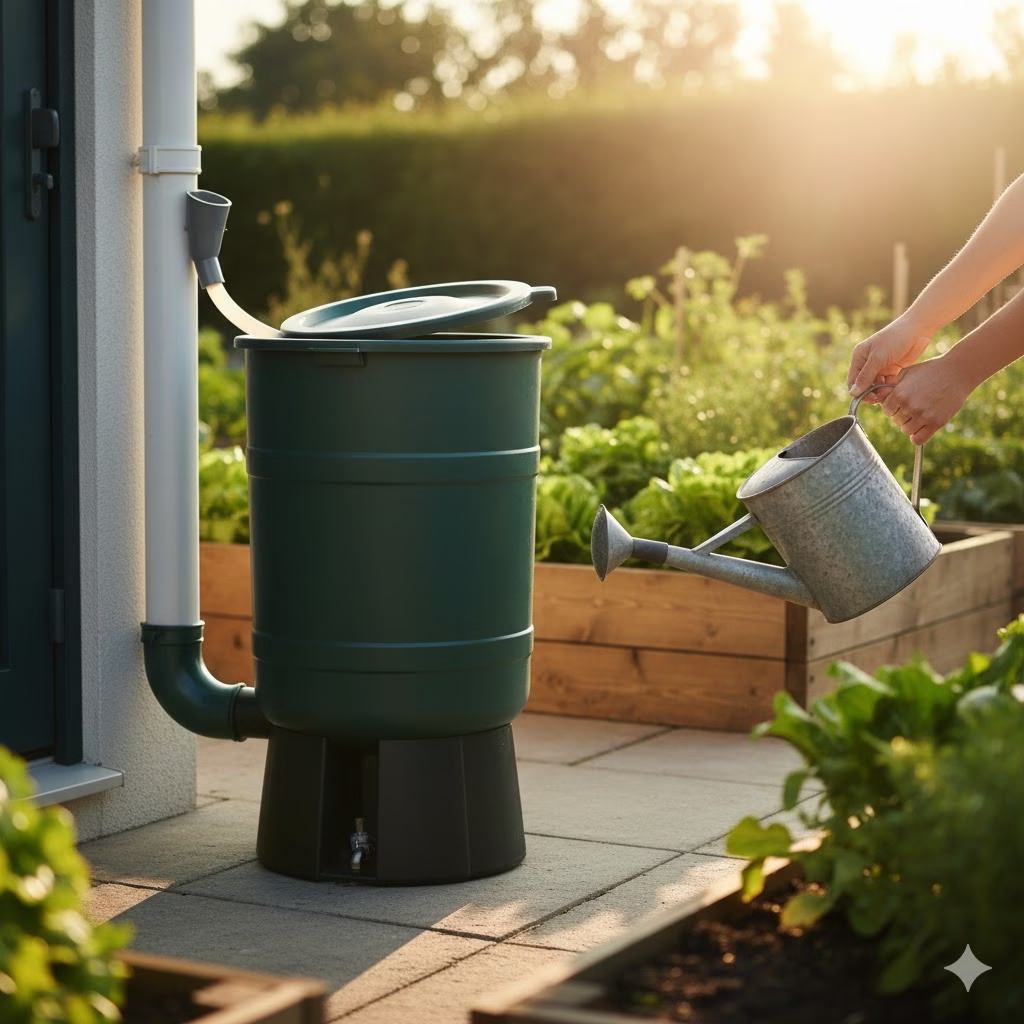
For many people, the summer months bring huge water bills because of outdoor use. Smart systems can save water for you automatically.
7. Rainwater Catchers (Water Butts)
Collecting and using the rain is the best way to save water.
What This Gadget Is
A large tank (called a water butt) that you connect to the drainpipe coming from your roof gutter.
How It Works to Save Water
Rainwater is collected and saved to use later. This water is perfect for watering plants, washing your car, or filling a small pond. Using rainwater means you do not have to use your costly, treated tap water for outside jobs. Rainwater is also better for your plants because it does not have the chemicals found in tap water.
How to Do It (Installation):
- Find the Spot: Put the water butt next to a downpipe on a flat, strong surface.
- Install a Diverter: Cut a piece out of your downpipe and put in a diverter kit. This sends rainwater into the butt. When the butt is full, the diverter sends the extra water back down the pipe.
- Attach a Tap: Put a tap or hose on the connection point near the bottom of the butt so you can easily get the water out.
8. Smart Garden Controllers
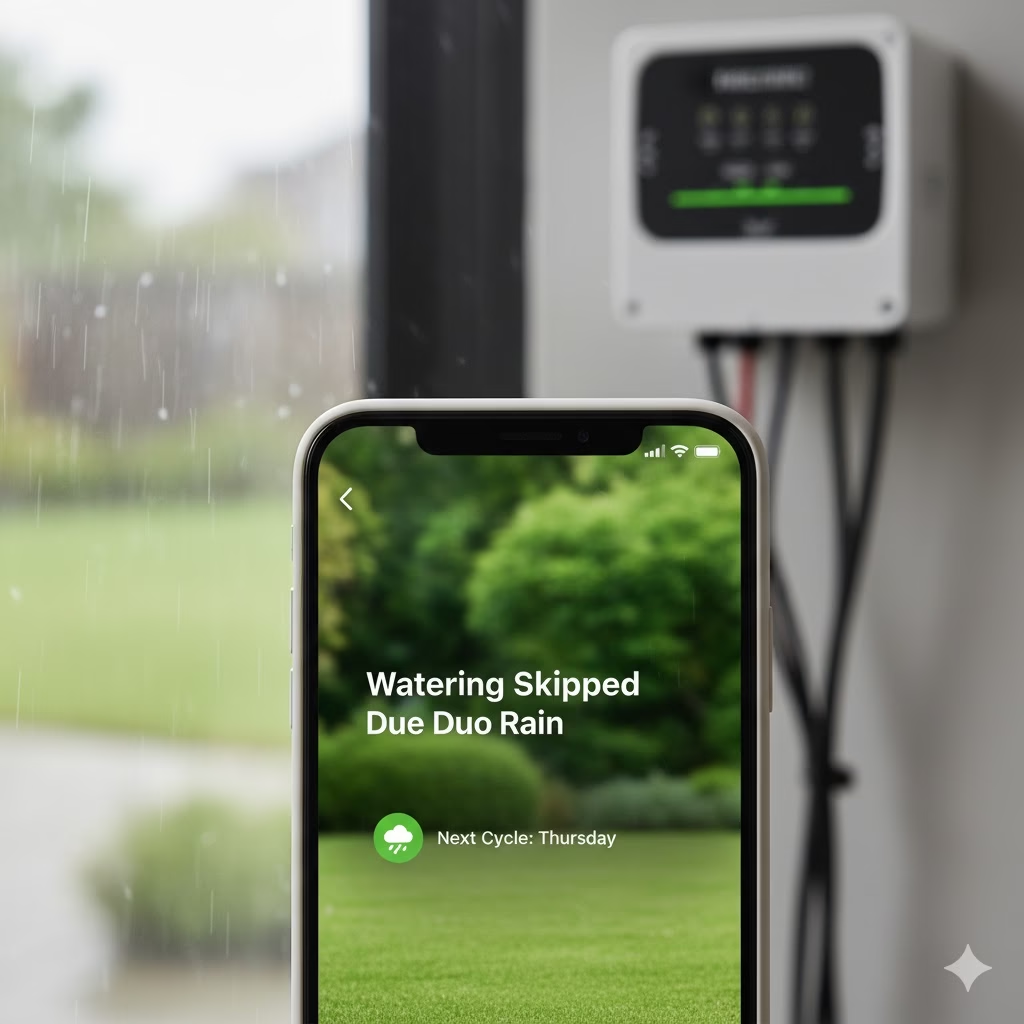
Forget the old timers and let technology manage your garden’s watering needs.
What This Gadget Is
A sprinkler controller that connects to your Wi-Fi. It uses local weather forecasts and sensors to check the ground’s moisture.
How It Works to Save Water
Instead of watering at a set time (like every Tuesday), the smart controller only runs your sprinklers when they are truly needed. If rain is expected, it skips a day. If the weather has been hot and dry, it waters for a longer time. This stops you from wasting water by overwatering and can save up to 50% of the water you use outside.
How to Do It (Usage):
- Swap the Controller: Take out your old sprinkler timer and replace it with the new smart one, hooking up the existing wires.
- Connect to Your Wi-Fi: Link the device to your home internet network.
- Give It Information: Tell the app about the types of plants you have, your soil, and the size of your yard. The controller then takes charge, setting the best watering schedule that changes with the weather.
9. Hose Nozzles with Triggers

This tiny change stops the waste of thousands of litres of water.
What This Gadget Is
A nozzle for your garden hose that needs you to hold a trigger or lever to keep the water flowing. It stops immediately when you let go.
How It Works to Save Water
When you wash a car or clean a deck, it is easy to let the hose run while you are scrubbing. A trigger nozzle makes sure water only flows when you are actively using it. This is a huge help to Save Water by preventing constant running.
How to Do It (Installation):
Just screw the nozzle onto the end of your garden hose. Pick a spray setting (like jet, mist, or shower) that is best for the job.
Zone 5: The Leak-Stopping Lifeline
Sometimes the biggest waste is hidden. This makes a smart detector your most valuable water-saving gadget.
10. Smart Water Leak Detectors
A leak you cannot see can be one of the costliest water wasters in a home.
What This Gadget Is
Small sensors, about the size of a coin, that you place near places where leaks might start (under your sinks, near the water heater, next to the washing machine). They connect to an app on your phone.
How It Works to Save Water
The sensor notices even a tiny bit of moisture or a change in dampness and immediately sends an alert to your phone. This lets you find and fix small drips before they turn into huge problems. This saves the gallons that would slowly leak behind walls or under floors.
11. Whole-House Water Monitoring Systems
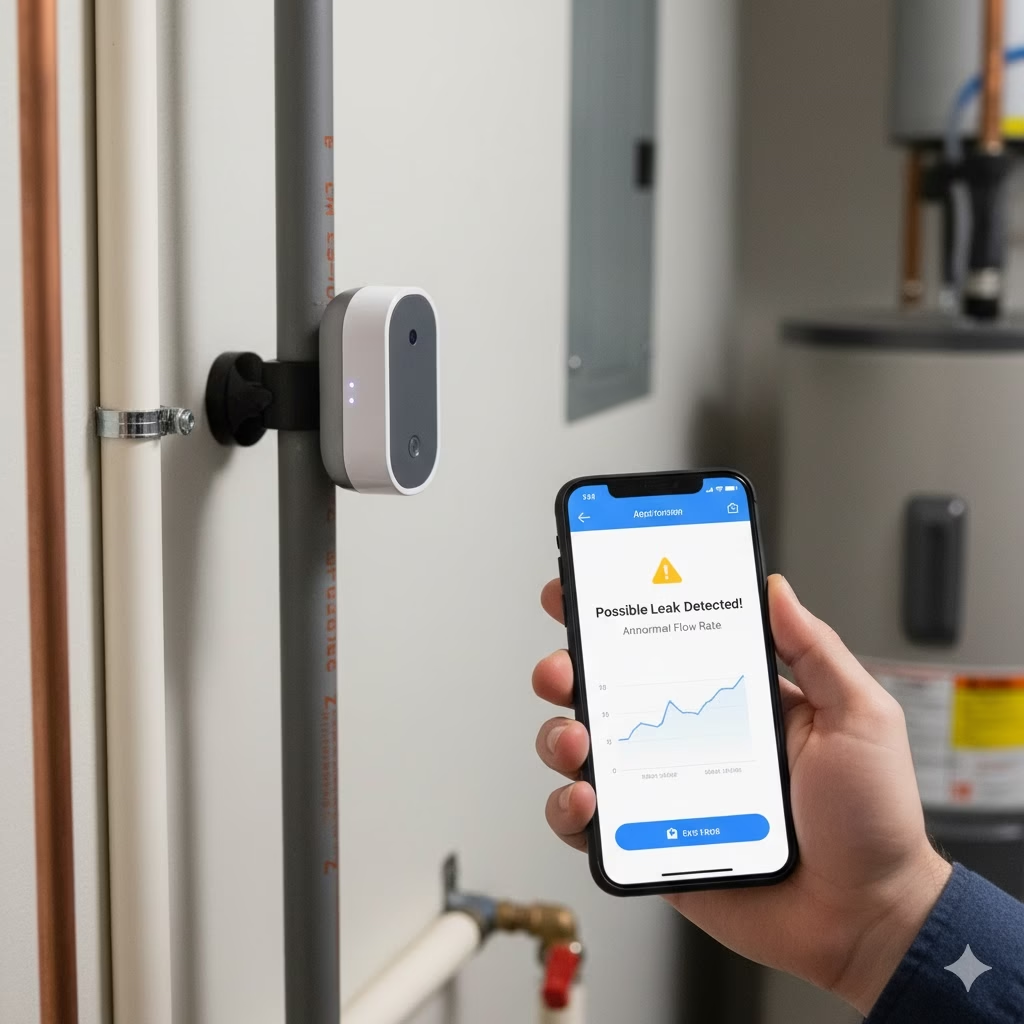
This is the most advanced step in smart water conservation.
What This Gadget Is
A device you install right onto your main water line. It tracks the flow of water every single minute.
How It Works to Save Water
This system learns what your normal water use looks like. If it senses a constant, strange flow (like a shower running for two hours straight), it alerts you that you might have a serious leak. Some of the best systems can even shut off your main water valve on their own to stop a disaster and prevent huge waste. This gadget is the ultimate tool to Save Water by finding and stopping hidden leaks.
The Money and Planet Impact
The cost of these gadgets—from a simple $10 aerator to a larger $500 smart monitor—is an investment that pays you back. Every drop of water you save is a drop you do not pay for. Even better, it is a drop that did not need energy for cleaning, pumping, and heating. A home fully set up with these tools can see utility bills drop so much that the gadgets pay for themselves within just a few years.
By making these changes, you shift your home’s water plan from fixing problems after they happen to being smart about efficiency from the start. This gives you smaller bills and helps build a better, more sustainable future.
Frequently Asked Questions (FAQ)
Q1: Will a low-flow device actually make my water pressure weak?
This is what people worry about most. For modern, good-quality devices, the answer is generally no. New low-flow showerheads and aerators are designed to keep the pressure feeling strong and comfortable. They do this by mixing air into the stream or using special pressure technology. The Save Water benefit comes from lowering the amount of water used, not from making the pressure feel weak.
Q2: How much money can I really save by installing a tap aerator?
Putting a 1.5 GPM tap aerator on a normal kitchen faucet can save a typical family an estimated 5,000 to 7,000 litres of water each year. You will save the most money on taps that you use often for quick jobs, like washing hands or rinsing food.
Q3: Are dual-flush conversion kits hard to install on my older toilet?
Most dual-flush conversion kits are made to be easy to install by yourself and they come with good instructions. They are much less difficult and cheaper than replacing the whole toilet. If you can handle simple home repairs, you can usually install the kit in under an hour.
Q4: Do I need a special kind of soap for an HE washing machine?
Yes, High-Efficiency (HE) washing machines must use HE detergent. These soaps are made to create less foam, which is needed because HE washers use very little water. Using regular soap will create way too much foam, which can harm the machine and leave your clothes dirty.
Q5: Is the water from a rainwater butt safe for drinking?
No, the water collected in a normal rainwater butt is not safe to drink. It is perfect and highly recommended for outdoor tasks like watering plants, cleaning tools, and washing your car. For drinking or cooking, you would need a very complex, multi-step filter system.
References
- EPA – WaterSense
- Energy Saving Trust – Advice to help you save water at home
- Valleywater – Water Saving Devices
Recent Posts

